QUERENCIA (2024)
Program Notes
Querencia
The great New Mexican author Rudolfo Anaya wrote “querencia is love of home, love of place.” There is a spiritual, familial element to the word, at least how New Mexicans perceive it. The writer, poet, and researcher Juan Estevan Arellano says querencia “is that which gives us a sense of place, that which anchors us to the land, that which makes us a unique people, for it implies a deeply rooted knowledge of place, and for that reason we respect it as our home."
My grandpa, Eduardo (Eddie) Garcia, was a folk accordionist in the style of música norteña. He would play rancheras, corridos, and banda, which all take inspiration from mariachi, rockabilly, polka, and waltz. I learned to play all this music from him by ear, performing on the saxophone at his side for my entire childhood. When I began studying jazz and classical music I drifted into a new and exciting world. I’d go months at a time never thinking about rancheras until I returned home to play with him.
When we were apart, he would ask me if I was still playing saxophone, still playing the music I grew up with. I told him I didn’t have a lot of time, but we could play again when I was back in town, which we did for many years. He passed away in 2023, soon after turning 90. It was expected, but nonetheless his passing hit me very hard. He was my first music teacher, my first role model. He was so proud of me, even though I was writing and performing music he had never heard of before. Going home no longer means playing rancheras and corridos with him. Going home lacks my querencia.
This piece, titled Querencia, is a tribute to those who guide and inspire us. It’s written for a single orchestra or a student and professional orchestra to play together in a side by side, with solos reserved for the mentors to show the way and inspire their mentees. It’s meant to give a lifelong memory and sense of belong, a querencia, to these young students.
This work is dedicated to those who leave indelible marks on our lives as children. This work is an exploration of my grief – it contains two themes, inspired by his name. GARCIA (mapped to G-A-D-C-B-A) played over and over while cycling through 12 tonal centers to find his favorite key (which happens to be G), and EDDIE (mapped to E-D-D-B-E), which starts off as a flourish but turns into a ranchera based on his name. The trumpet and clarinet have special significance in this work. His first mentor was his older brother, Ramón, who played the trumpet. I played the saxophone, with the clarinet being closest in sound in the orchestra. As such the two of us, bookends to his long career, play together through him as the connective tissue in a long lineage of New Mexican musicians. I wrote it in a way that is hopefully not obscure, something that he himself would have heard and loved as if it came from his own fingers when playing by ear. I like to think he would have laughed hearing this piece, wondering why it took me so long to write in this style after so many years. The work ends with me searching for his favorite key once more, before finally landing on it with full confidence, knowing I can keep going without him because of everything he has given me.
- Nicolás Lell Benavides
Performance Notes
This piece was commissioned to be presented both as is as well as an orchestra side by side with student and professional orchestra so students can gain mentorship through experience. As such, it is designed to work in a few configurations with minimal adjustments.
The orchestra can be divided and doubled in any number of ways, but the original doubling scheme for which the premiere was written is listed below. Every student orchestra has varying skill levels, and so when doing a side by side, I encourage you to use best judgement with how to divide up the parts.
Winds are only doubled in the core instruments. Auxiliary instruments are highly encouraged but they always double at the octave and can be omitted if a student orchestra cannot supply those players. Percussion is logistically difficult and unwieldy to double, and as such there are 4 separate percussion parts. The harp part could ostensibly be played by a piano with a student orchestra who does not have a harpist, though it is designed as a true harp part. Strings are divided into L and R stands, though that is only for the experience of the students and is not used compositionally.
Solo is both a standard solo marking and signifies that the professional orchestra member should play. All standard sections get solos (not optional wind parts).
Tutti implies that doubling should resume (as opposed to a large orchestral tutti). In standard performance this direction can largely be ignored.
1./2./a2 (winds) does not imply a solo, but rather first or second chair. In standard performance this will be a solo, but in the side by side this implies both first chair players (student/professional) will play together.
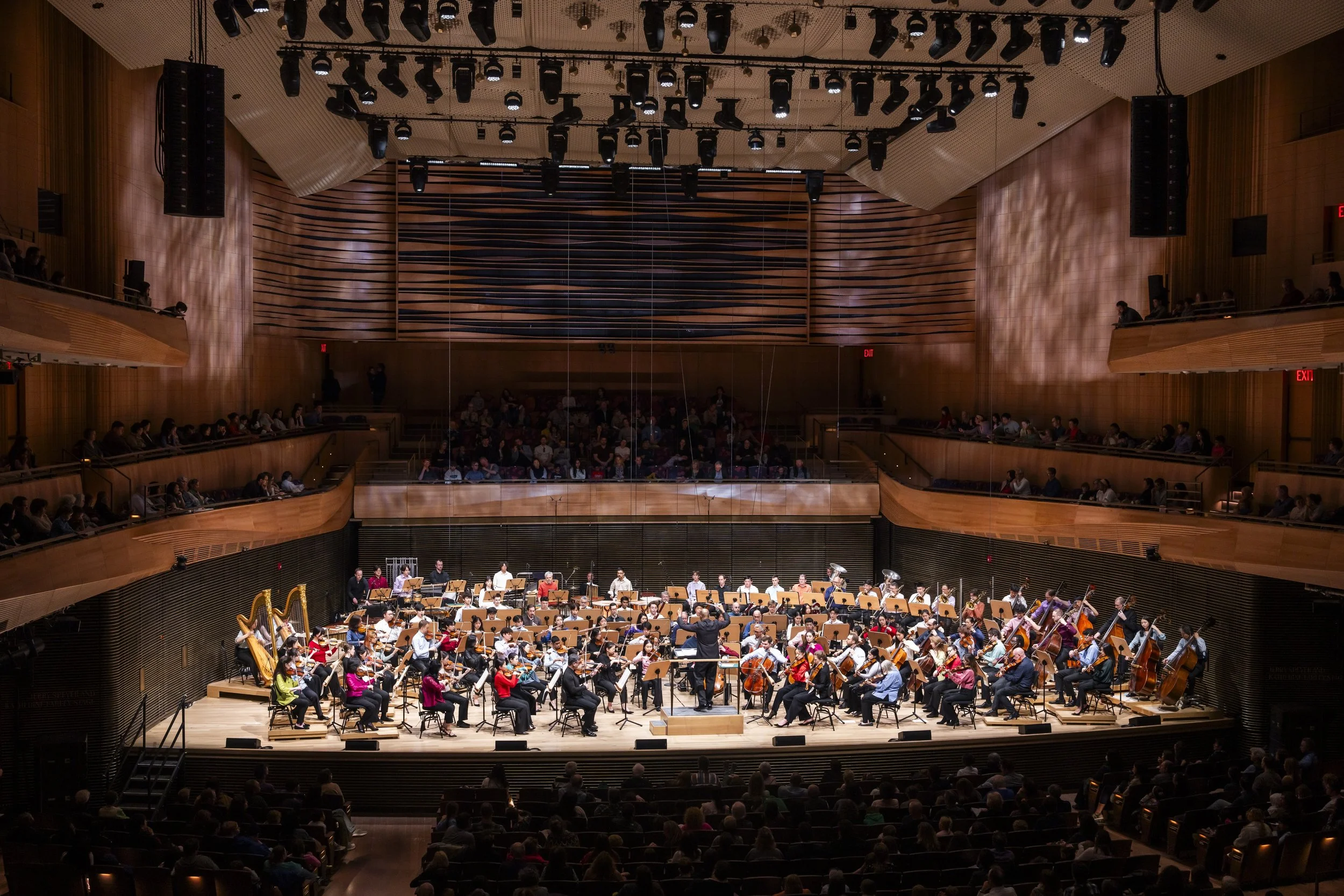

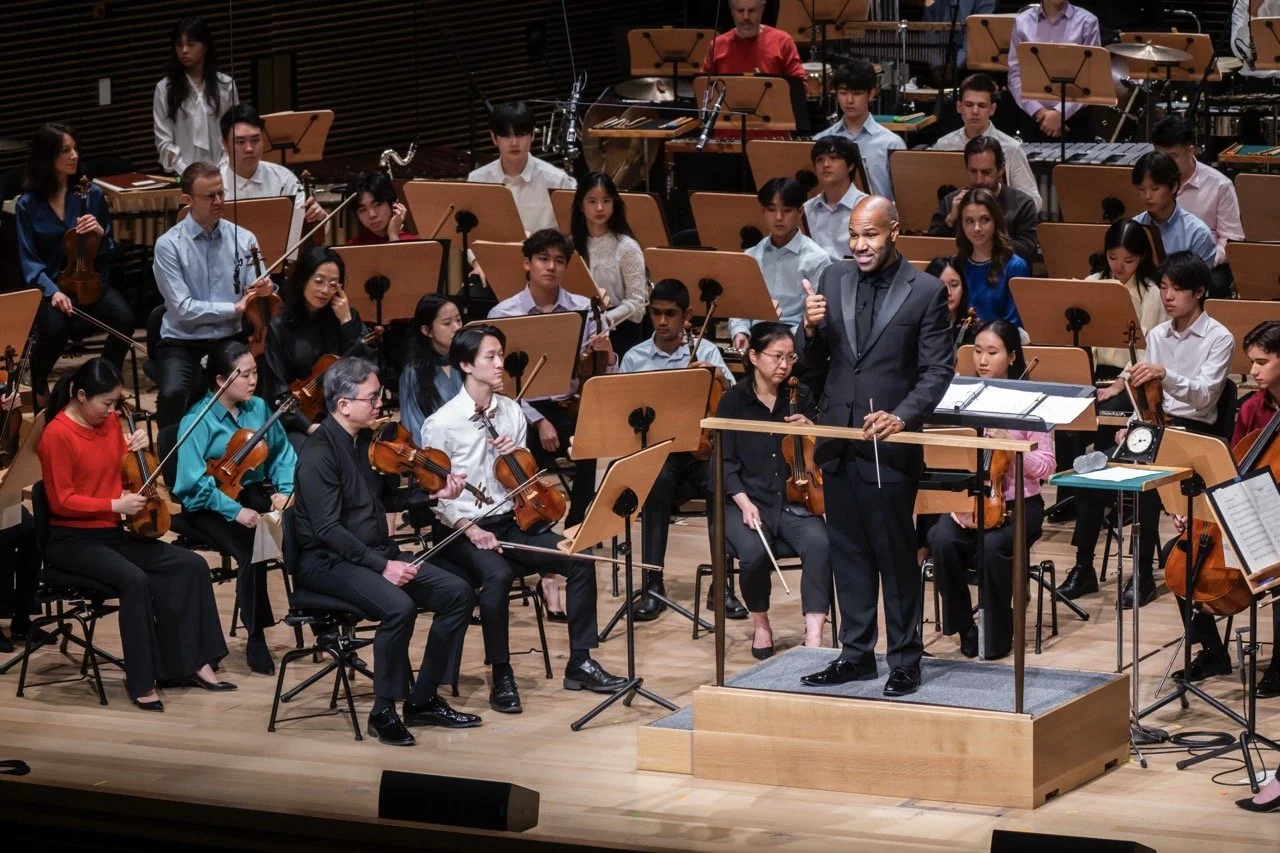
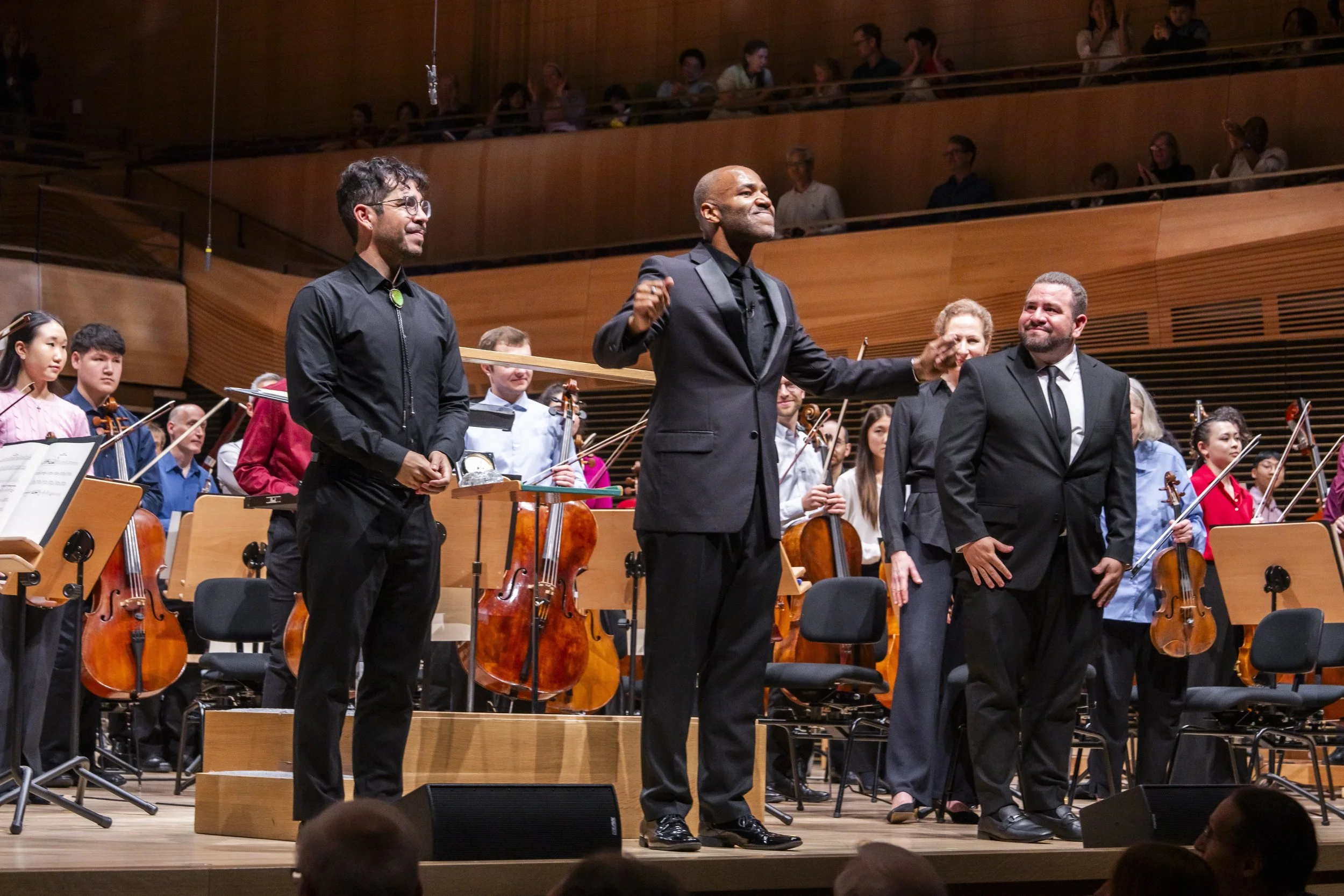

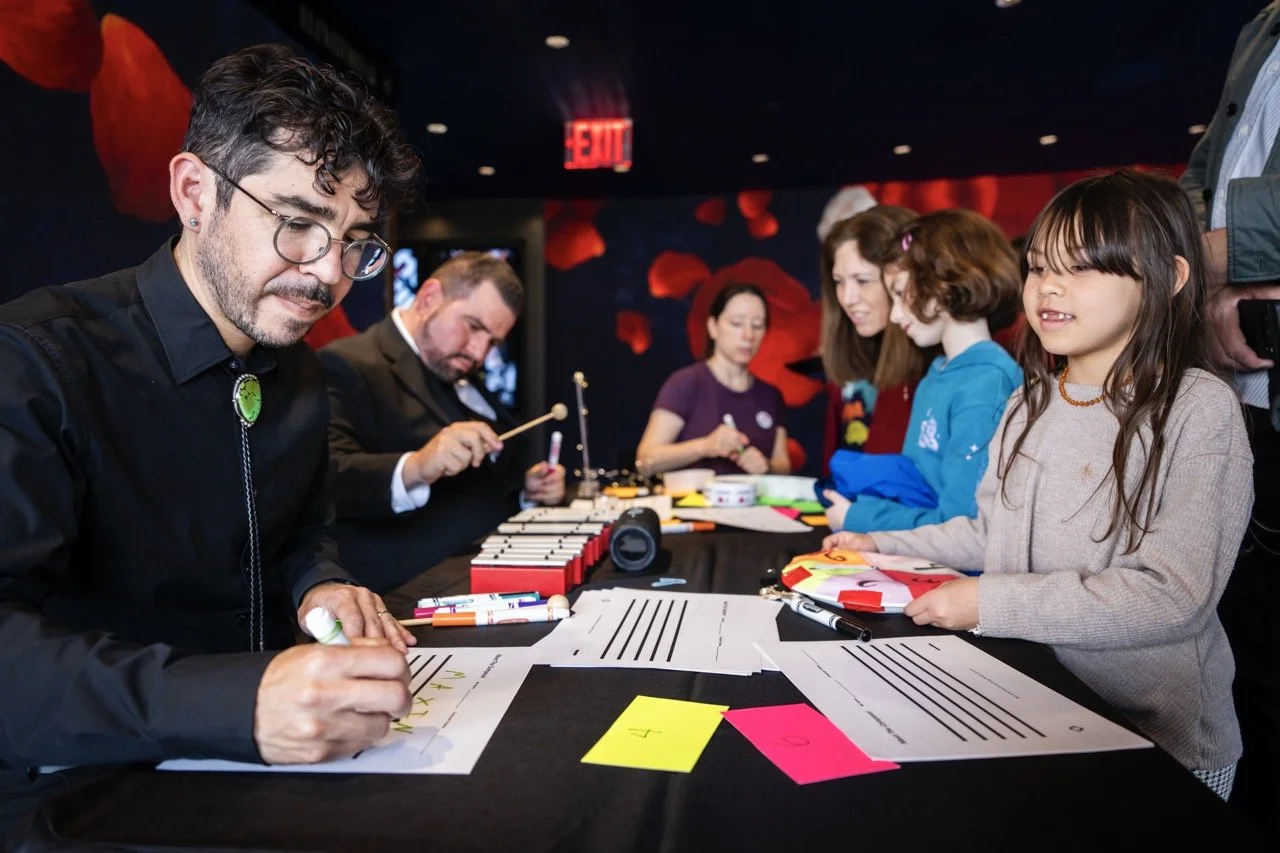
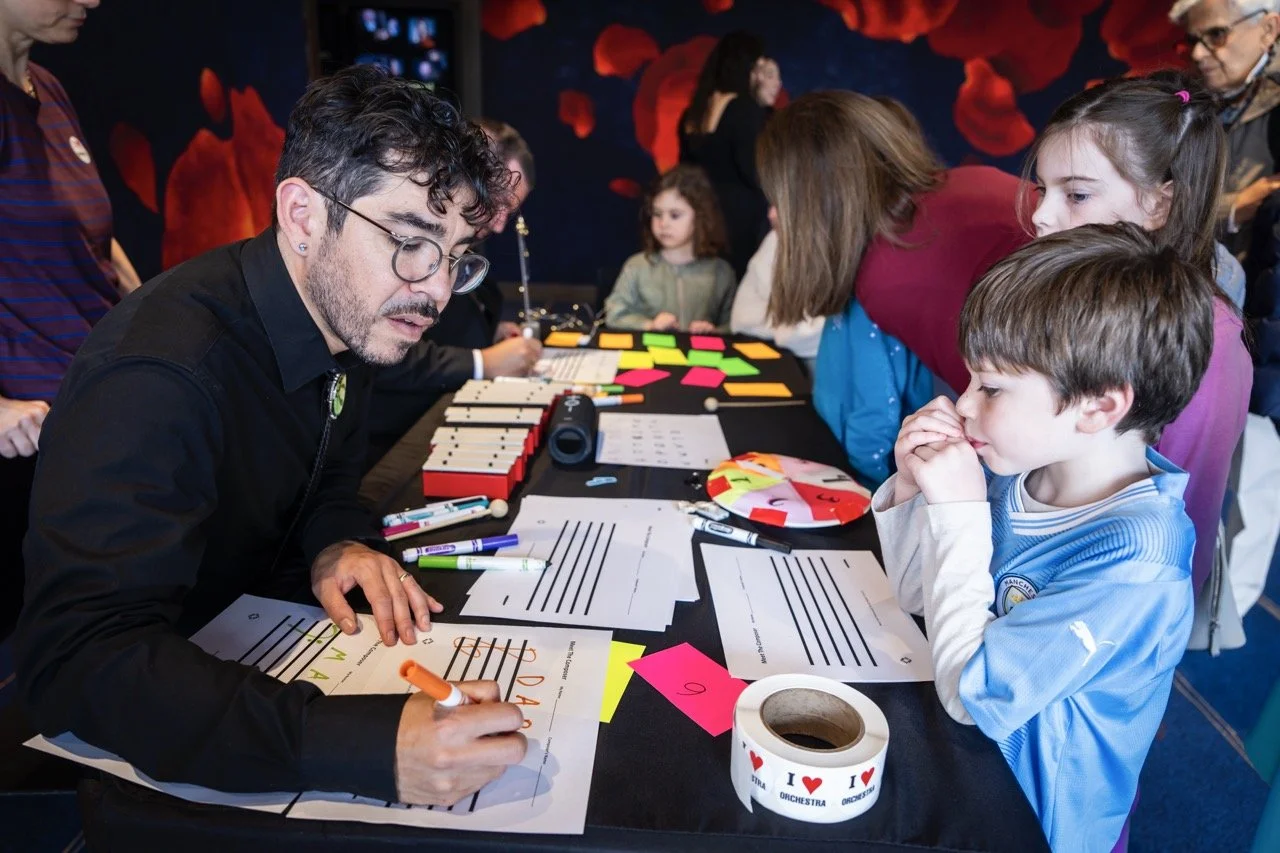
Can be doubled for an orchestra side by side. See performance notes.
1 Piccolo (optional)
2 Flutes
2 Oboes
1 English Horn (optional)
2 Clarinets in B♭
1 Bass Clarinet in B♭ (optional)
2 Bassoons
1 Contrabassoon (optional)
4 Horns in F
3 Trumpets in C
2 Trombones
1 Bass Trombone
1 Tuba
1 Timpani (4 drums)
Percussion (4 players)
P1: Glockenspiel, Marimba (4.3), Crash Cymbal, Suspended Cymbal
P2: Vibraphone, Xylophone, Snare, Rain Stick (shared 4), Tam-tam (shared 3)
P3: Crotales, Maracas, Hi-Hat, Tam-tam (shared 2)
P4: Chimes, Rain Stick (can be shared 2), Bass Drum
Harp
Strings
Duration: 8 minutes
Instrumentation (side by side suggestion)
See performance notes.
Student Orchestra Professional Orchestra
Flutes (opt. picc.) 3 2
Oboes (opt. E. Hn) 3 2
Clarinets (opt. B. Cl.) 3 2
Bassoons (opt. C.B.) 3 2
French Horns 4 2
Trumpets 3 2
Trombones 2 2
Bass Trombone 1 1
Tuba 1 1
Timpani 1 1
Percussion (not doubled, 4 parts) 2 2
Harp 1 1
Violins I 7 7
Violins II 6 6
Violas 6 6
Violoncellos 7 7
Contrabasses 3 3
